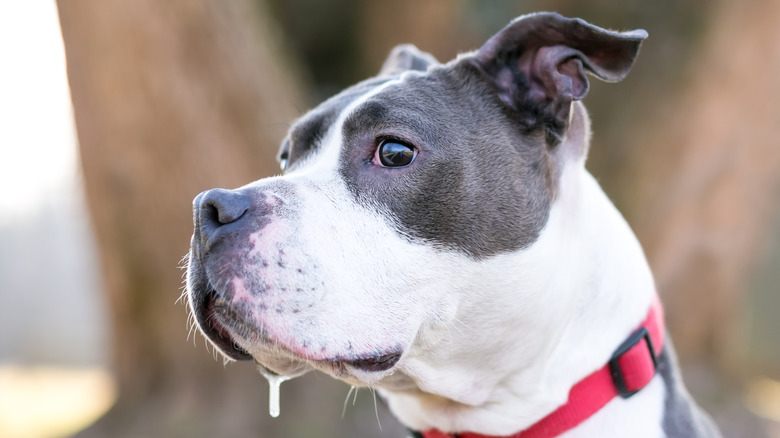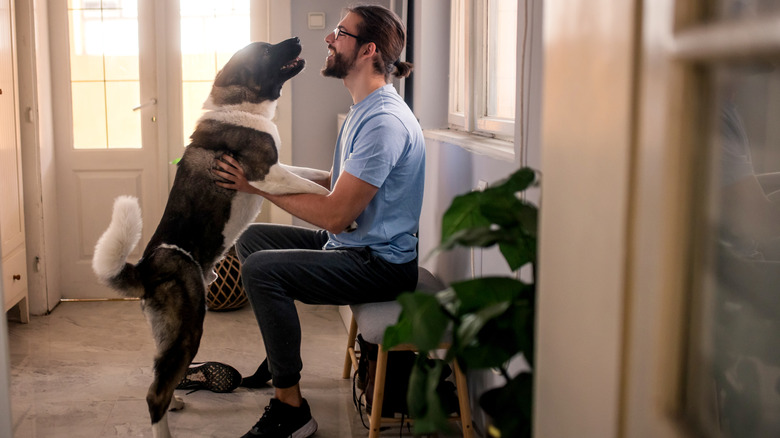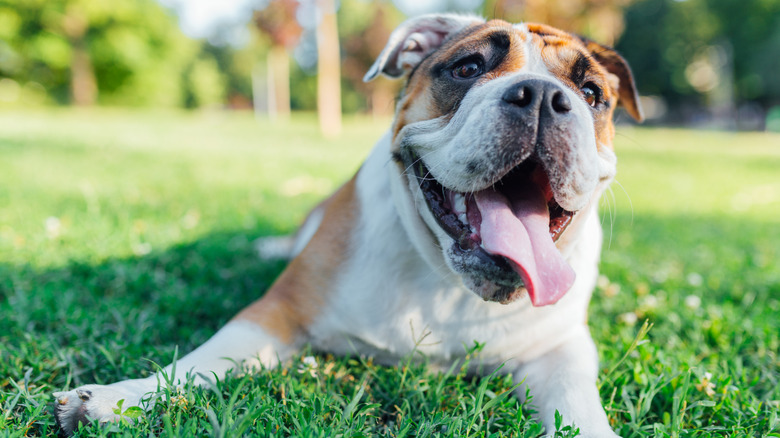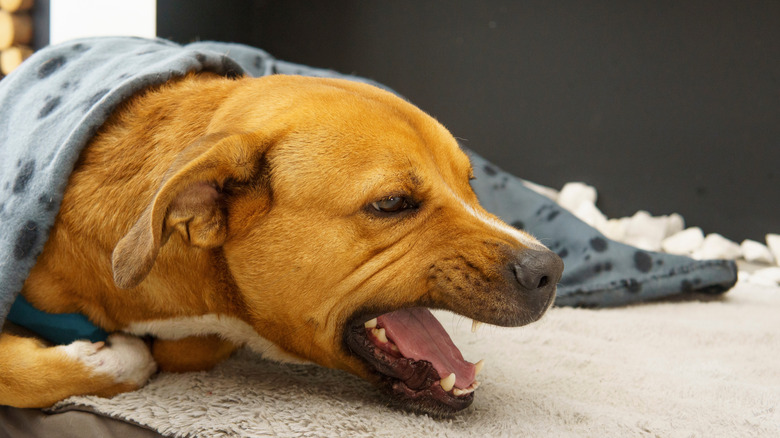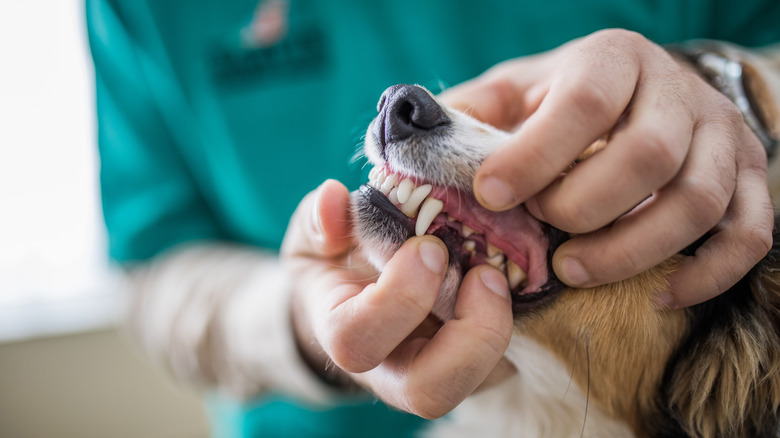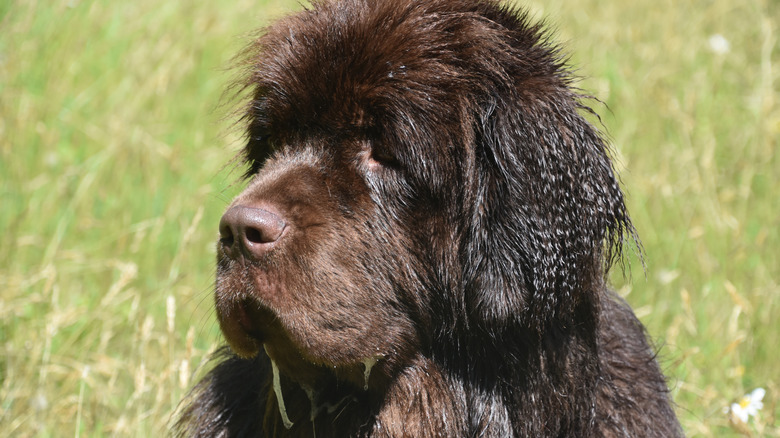What It Actually Means When Your Dog Drools
We may receive a commission on purchases made from links.
If you have a particularly jowly dog, drool may be a fact of your life. You may find it smeared on your clothes, shaken onto your walls, or slicked all over the floor. Drool is quite common in dogs, but not all dogs are Droolie Andrews or Droolia Child 24/7. There are actually lots of different reasons your slobbery dog might suddenly become extra drooly or your dog who doesn't normally drool will suddenly start leaking from the mouth, and some of them are more serious than others.
It can be hard to tell what constitutes excessive drooling in your pup. Since every dog is different, and because you know them best, your instinct is the best determiner of too much drooling. There are several breeds that simply tend to drool more than others: English bulldogs, mastiffs, Newfoundlands, and Saint Bernards are a few. There are also certain instances where dogs may drool a bit more, but as long as the drooling goes back to normal soon after the activity ceases, it's not a concern. If you are a vigilant and observant pet parent, it's likely that you will notice when your dog is drooling more than normal. Here's what it could mean.
Excitement or anxiety
Some dogs drool when they get overly excited or anxious. You might arrive home from a long day at work to find your pup greeting you with jumps, hugs, licks, and lots of drool. They could also be stressed out because of fireworks on the Fourth of July or a thunderstorm rattling the house, so they pant and drool because they're frightened.
In these cases, the best thing to do is to treat their emotional state. You may just have to get used to some drool when you come home in the evenings — it should stop once you greet your pup and everyone calms down. In the cases of loud noises or other nerve-wracking situations, making your pup as comfortable as possible will help them stay calm and ease their anxiety, and thus, their drool.
Making a safe space for your pup — a crate, a corner of the couch, even a closet — and letting them go there can help in stressful, noisy situations. Playing music, talking to them, cuddling with them, or distracting them with treats are also good ideas. In extreme cases, you can talk to your vet about anxiety medication or something like a Thundershirt, which is designed to apply a calming, gentle pressure to your pup. You can even make an anxiety "scarf" wrap for dogs from leggings. If your dog is frightened and drooling profusely, it should stop once they're feeling less anxious.
Overheating
Your dog may drool excessively if they get too hot, and this can be a temporary situation or a more serious problem that requires medical treatment. They may run in the park excitedly and plop down panting and drooling. Chances are they will stop after a little while and get back to their usual breathing and drooling routine. That's completely normal.
But dogs can also get heat stroke, which happens when dogs get too hot and they can no longer regulate their body temperatures. In addition to excessive drooling that doesn't resolve, symptoms include super fast, heavy panting, barking or whining, agitated behavior, excessive thirst, dark red or purple gums or tongue, glassy eyes, or in severe cases, staggering, collapsing, seizures, or passing out. Heat stroke in dogs is an emergency. These are serious symptoms you shouldn't ignore in your dog, so you want to get them to a vet ASAP.
The best way to prevent heat stroke in your pups is to limit outdoor activity when it's really hot out, make sure there is shade and cool water available to them, let them rest frequently, and choose cooler times of the day to spend time outside, if possible. It's also imperative that you never leave your dog alone in a car. Even if it doesn't seem too hot outside, car temperatures increase at extremely rapid rates.
Nausea
Stomach issues can cause excessive drooling in dogs, as well. The cause of their nausea could be anything from eating something they shouldn't have eaten to carsickness. They can also suffer from other gastrointestinal problems like reflux. If your canine pal vomits, shakes, or becomes lethargic in addition to the drooling, that could be a sign that they ingested something toxic, and you should call your vet immediately.
If your pup gets carsick, it may be due to the actual motion of the vehicle, but it could also be connected to anxiety they have about being in the car. Talk to your vet about medication for nausea or anxiety, and try to make car rides as comfortable as possible for your pup by putting them in the middle seat to reduce rocking, opening the windows for some fresh air, and buying them a special toy specifically for the car.
Dental issues
There are a lot of problems with the mouth that dogs can develop that could lead to excessive drooling. They include dental issues like cracked teeth or gum disease, mouth injuries from chewing on sharp objects or splintering toys, or growths in the mouth. In these cases, treatment will depend on the specific problem.
Your pup may require a dental treatment or tooth removal. These are often procedures that happen under general anesthesia, and your vet will make the call about whether it's necessary. If your pup injured their mouth with a foreign object, it may just take a little time to heal. However, if it doesn't resolve on its own after a day or two or there's an object stuck in their mouth, that's when it's time to get them seen by a doctor. Obviously, you'll also want to head to the vet if you notice any abnormal growths on the gums or jowls.
Some dog breeds are prone to drooling
If your pup is simply prone to lots of drooling because of their breed or their plentiful jowls, there's not a ton you can do to control it. You can try having them wear a bandana that may help catch some of the moisture as they slobber. You can also do things like wipe their mouths after they eat or drink, or train your pup to dry their own face like the one below.
Part of having a dog is learning to live with all parts of them: the cute, cuddly animal, but also the hair and the drool and the mess. Embrace the drool — and maybe learn a few tricks about how to keep your house clean with a dog that drools. When it gets smeared on your outfit, look for pictures in it like you would with clouds. Keep it there all day as a reminder of the animal you love and who loves you. After all, it's a part of them that they are so generously sharing with you.
Always consult your veterinarian before making changes to your pet's diet, exercise, or care. To find an accredited veterinarian in your area, you can search the American Animal Hospital Association's online database.
